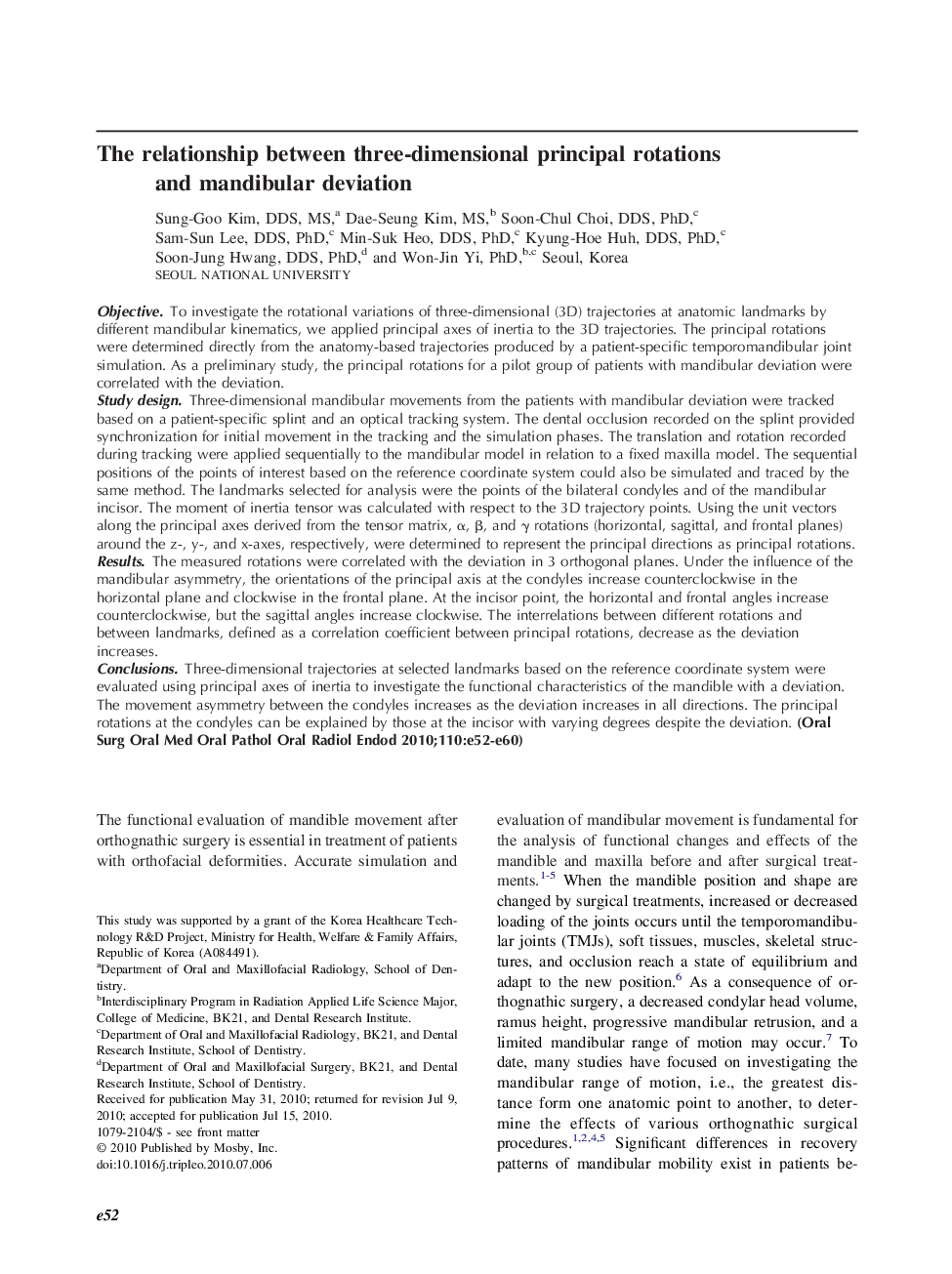| Article ID | Journal | Published Year | Pages | File Type |
|---|---|---|---|---|
| 3167468 | Oral Surgery, Oral Medicine, Oral Pathology, Oral Radiology, and Endodontology | 2010 | 9 Pages |
ObjectiveTo investigate the rotational variations of three-dimensional (3D) trajectories at anatomic landmarks by different mandibular kinematics, we applied principal axes of inertia to the 3D trajectories. The principal rotations were determined directly from the anatomy-based trajectories produced by a patient-specific temporomandibular joint simulation. As a preliminary study, the principal rotations for a pilot group of patients with mandibular deviation were correlated with the deviation.Study designThree-dimensional mandibular movements from the patients with mandibular deviation were tracked based on a patient-specific splint and an optical tracking system. The dental occlusion recorded on the splint provided synchronization for initial movement in the tracking and the simulation phases. The translation and rotation recorded during tracking were applied sequentially to the mandibular model in relation to a fixed maxilla model. The sequential positions of the points of interest based on the reference coordinate system could also be simulated and traced by the same method. The landmarks selected for analysis were the points of the bilateral condyles and of the mandibular incisor. The moment of inertia tensor was calculated with respect to the 3D trajectory points. Using the unit vectors along the principal axes derived from the tensor matrix, α, β, and γ rotations (horizontal, sagittal, and frontal planes) around the z-, y-, and x-axes, respectively, were determined to represent the principal directions as principal rotations.ResultsThe measured rotations were correlated with the deviation in 3 orthogonal planes. Under the influence of the mandibular asymmetry, the orientations of the principal axis at the condyles increase counterclockwise in the horizontal plane and clockwise in the frontal plane. At the incisor point, the horizontal and frontal angles increase counterclockwise, but the sagittal angles increase clockwise. The interrelations between different rotations and between landmarks, defined as a correlation coefficient between principal rotations, decrease as the deviation increases.ConclusionsThree-dimensional trajectories at selected landmarks based on the reference coordinate system were evaluated using principal axes of inertia to investigate the functional characteristics of the mandible with a deviation. The movement asymmetry between the condyles increases as the deviation increases in all directions. The principal rotations at the condyles can be explained by those at the incisor with varying degrees despite the deviation.
